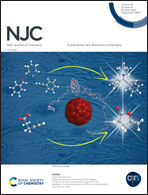Glucose-derived porous carbon as a highly efficient and low-cost counter electrode for quantum dot-sensitized solar cells
Abstract
Biomass-derived porous carbon is widely used in supercapacitors, carbon dioxide capture and lithium–sulfur batteries owing to its advantages such as wide sources, low cost and good stability. However, it is rarely used in quantum dot-sensitized solar cells (QDSCs). Here, glucose-derived porous carbon was obtained by hydrothermal carbonization followed with high-temperature KOH activation, and employed as an efficient counter electrode (CE) for QDSCs. The CV, EIS and Tafel-polarization analysis showed that porous carbon exhibits excellent catalytic activity for reduction of Sn2−. The CE based on porous carbon activated at 900 °C (C900) presents best performance with interface charge transfer resistance (Rct) of 2.4 Ω cm2 due to the synergy between high graphitization degree and large specific surface area. The power conversion efficiency (PCE) of the QDSCs assembled with a CdS/CdSe sensitized TiO2 photoanode and the C900 CE is up to 5.61% under one sun illumination. The excellent catalytic activity of C900 is attributed to its large specific surface area and porous structure and high degree graphitization. This suggests that glucose-derived porous carbon can become a potential low-cost and efficient CE material for QDSCs.



 Please wait while we load your content...
Please wait while we load your content...